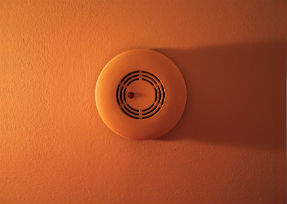What makes dual technology sensors different:�
Dual technology sensors are built to minimize false triggers from switching of lights to save power. The sensor allows lights to remain on if either the PIR or ultrasonic sensor is triggered to ensure that the light stays on. This reduces the chances of light switching off unexpectedly if there is a person sitting motionless in the room. These sensors are ideal for classrooms and conference rooms where there may not be enough motion for other sensors to detect, yet it is critical that the lights remain on when required.
The principle behind dual technology sensors:�
The passive infrared technology is used to detect motion across the sensors path while the ultrasonic technology helps in identifying when a person is approaching a sensor. A person needs to be identified by both the sensors for the lights to be turned on. It takes detection by only one of the sensors to ensure that the lights remain on. These sensors are sensitive enough to detect a person walking into the room or even a person who is sitting at a desk writing continuously.
How dual technology sensors save energy:
Passive infrared sensors help in reducing the number of false alarms and accidental switching off lights when occupants are in a room. The use of these sensors reduces the lighting bill by switching off unnecessary lights whenever not in use. According to the US Environmental Protection Agency, the amount of energy saved can be as much as 90% of energy consumed. The amount of actual savings incurred depends on the size and purpose of the room. For example, a private office may save only 13% to 50% on their energy savings while a storage area can save as much as 45% to 80% of their energy expenses.
Installing a dual technology sensor:
Care needs to be taken when installing a hybrid occupancy sensor. Like all other sensors, these sensors are highly visible and can be easily vandalized. Sensors need to be placed properly to ensure that they cover the area which they are meant to. Inaccurate placement of the sensor can lead to the sensor not detecting a person properly. Additional technologies such as the use of timers can complement the effectiveness of the occupancy sensor. Dual technology sensors may also be combined with a light meter that can trigger the lights if they fall below a certain limit. Today sensors are becoming compact enough that they can be integrated into an average wall box.
Ideally, a hybrid occupancy sensor should be ceiling mounted. This will give the sensor a 360 degree field of view of the room enabling it to catch minor motions. For effective use the occupancy sensor can be combined with a lighting control system. The lighting control system will allow the user to dim the lights whenever required. For example in a conference room the lighting may need to be dimmed during a presentation.










